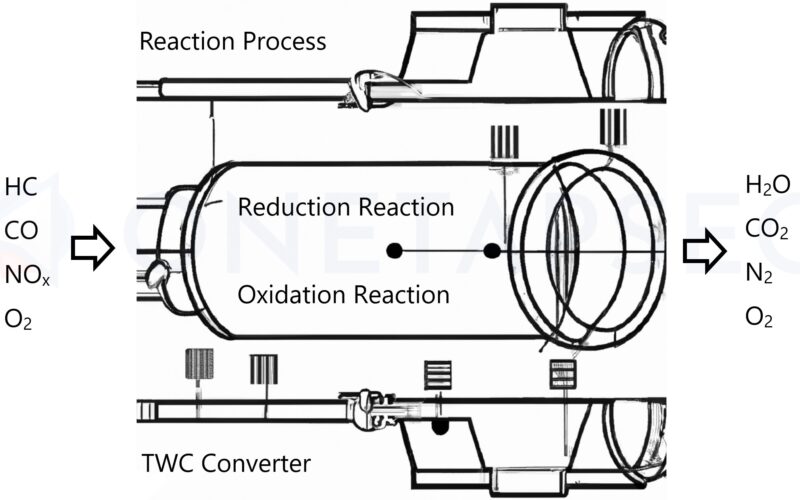What is a three way catalytic converter?
A three way catalytic converter is an emissions control device that reduces harmful pollutants in the exhaust gas of an internal combustion engine. It is called a “three way” converter because it is designed to reduce three types of pollutants: nitrogen oxides (NOX), carbon monoxide (CO), and hydrocarbons (HC).
The converter uses a combination of chemical reactions and physical processes to convert these pollutants into less harmful substances, such as nitrogen, water, and carbon dioxide. The three way catalytic converter is an important part of the emission control system of a vehicle and is required by law in many countries to help reduce air pollution.
Different types of TWC for your car
When it comes to choosing a three way catalytic converter for your vehicle, there are several different options to consider. Each type has its own set of features and benefits, and selecting the right one for your needs can be challenging. In this article, we’ll explore the different types of three way catalytic converters and help you determine which one is best for your vehicle.
The first type of three way catalytic converter to consider is the monolithic type. These converters are made from a single piece of ceramic material, which is formed into a honeycomb structure. The honeycomb structure provides a large surface area for the chemical reactions that take place within the converter, allowing it to operate efficiently and effectively. Monolithic catalytic converters are durable and long lasting, making them a popular choice for many vehicle owners.
Another type of three way catalytic converter to consider is the metallic type. These converters are made from a combination of metallic substrates, such as stainless steel, and are coated with a catalyst made from precious metals. Metallic catalytic converters are generally less expensive than monolithic converters, but they are also less durable and may require more frequent replacement.
A third option is the ceramic type of three way catalytic converter. These converters are made from a ceramic substrate and are coated with a catalyst made from precious metals. Ceramic catalytic converters are known for their high efficiency and durability, but they can be more expensive than other types.
When choosing a three way catalytic converter, it’s important to consider your vehicle’s specific needs and requirements. Factors such as the size of the engine, the type of fuel used, and the vehicle’s intended use will all play a role in determining which type of converter is best. Additionally, you should consider your budget and the level of maintenance you are willing to commit to.
Conclusion
In conclusion, there are several different types of three way catalytic converters to choose from, each with its own set of features and benefits. When selecting a converter for your vehicle, consider your specific needs and budget, as well as the level of maintenance you are willing to commit to. With the right catalytic converter, you can help reduce harmful emissions and protect the environment while also improving the performance and efficiency of your vehicle.

